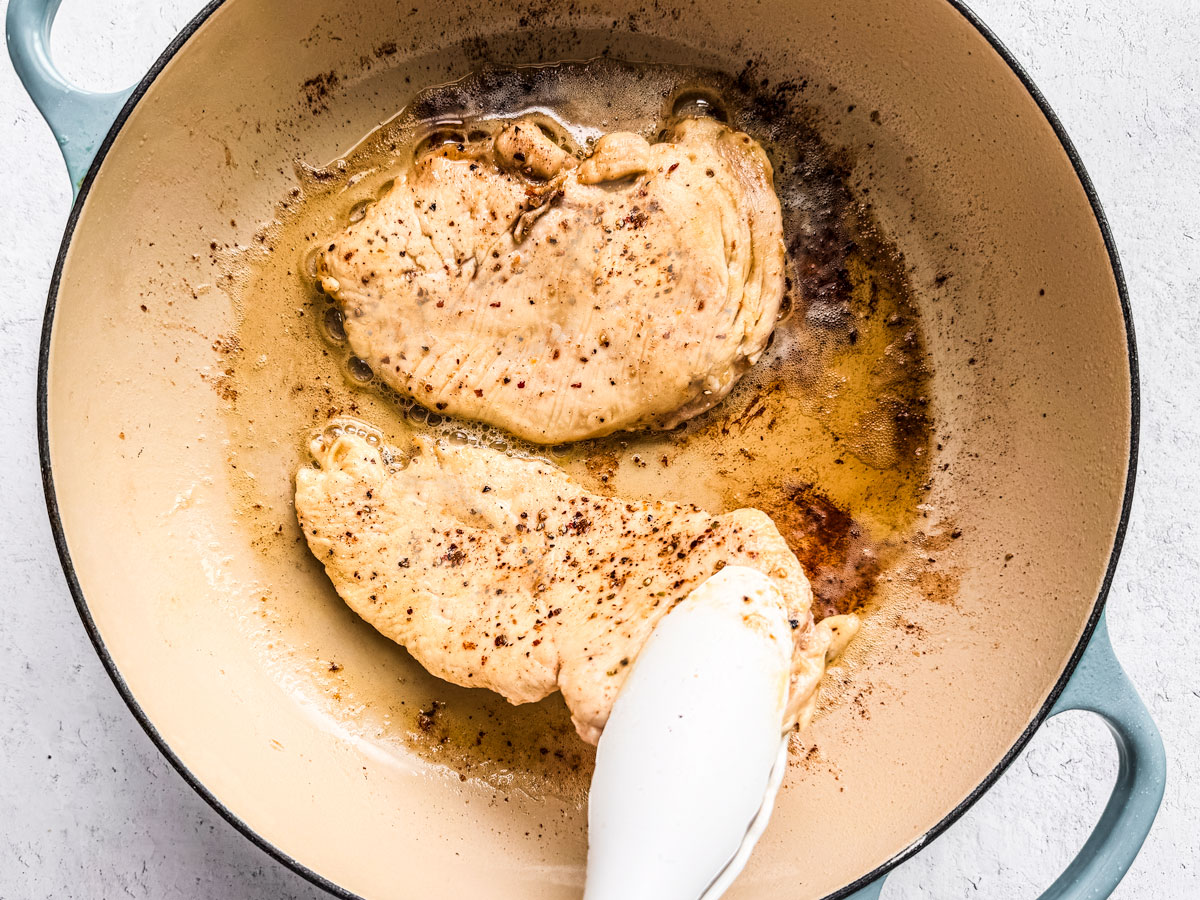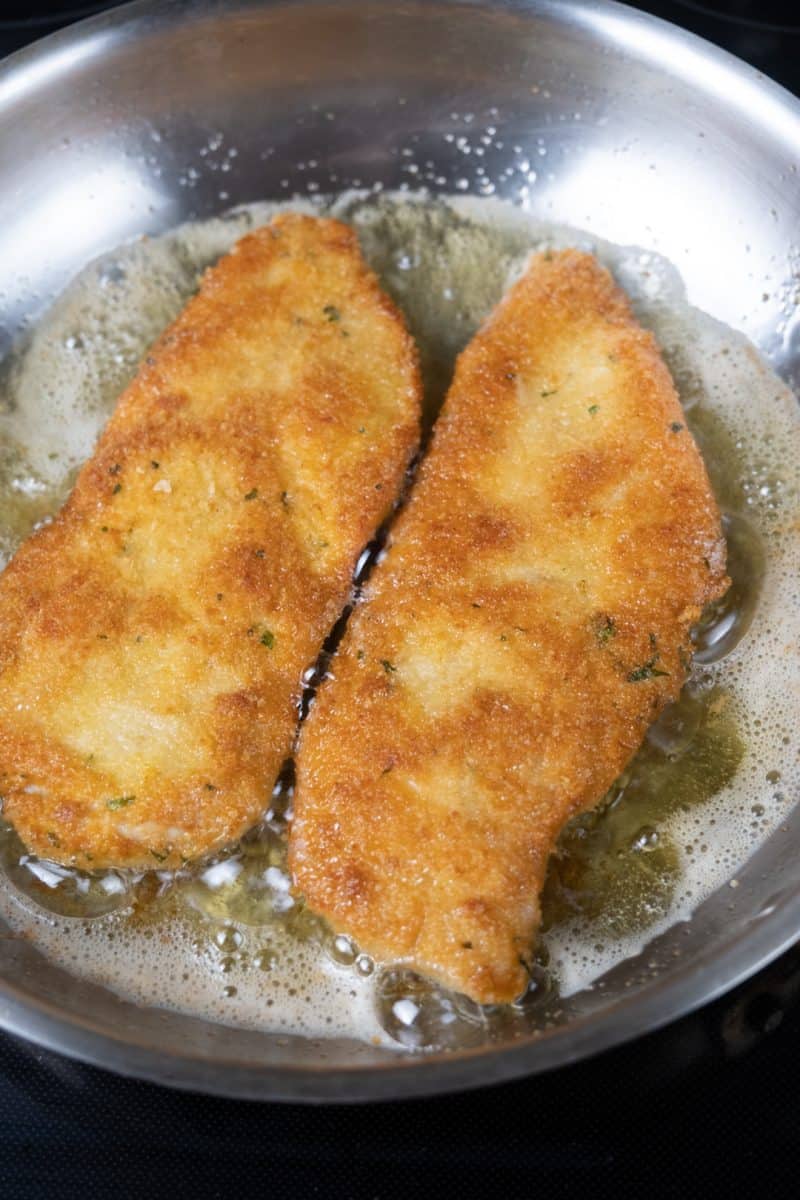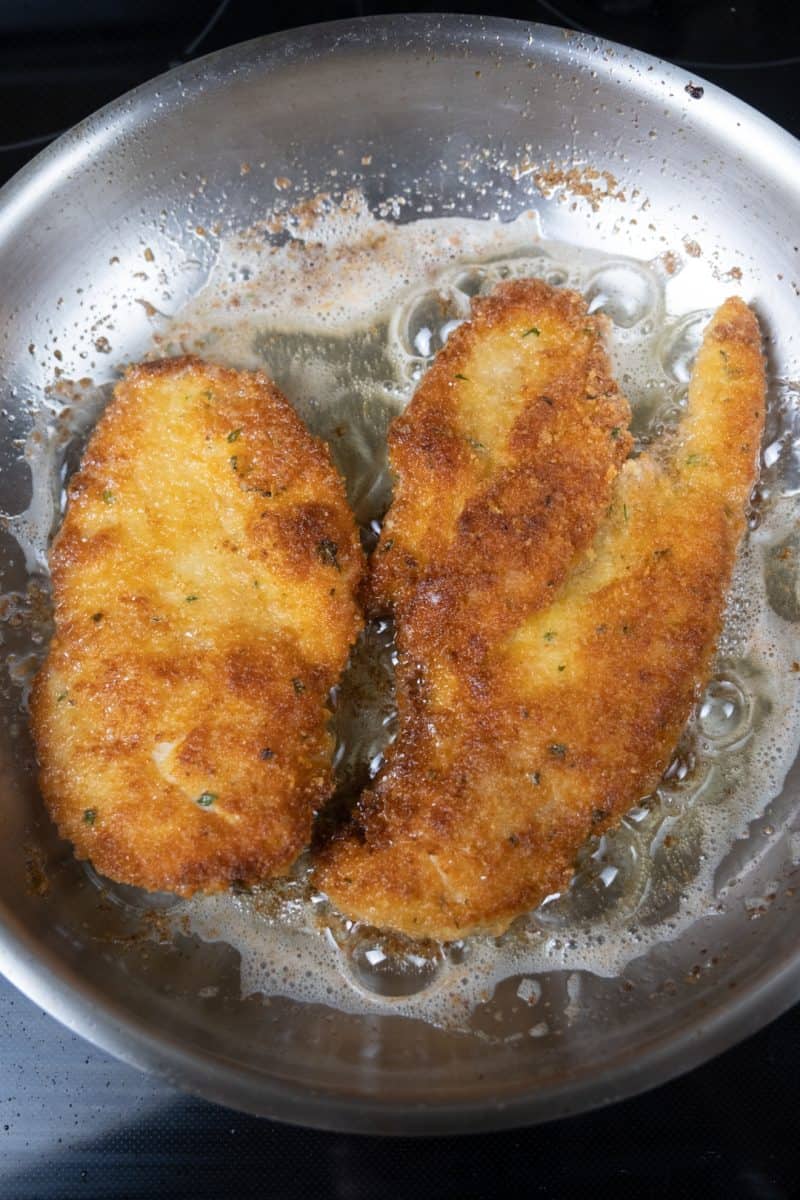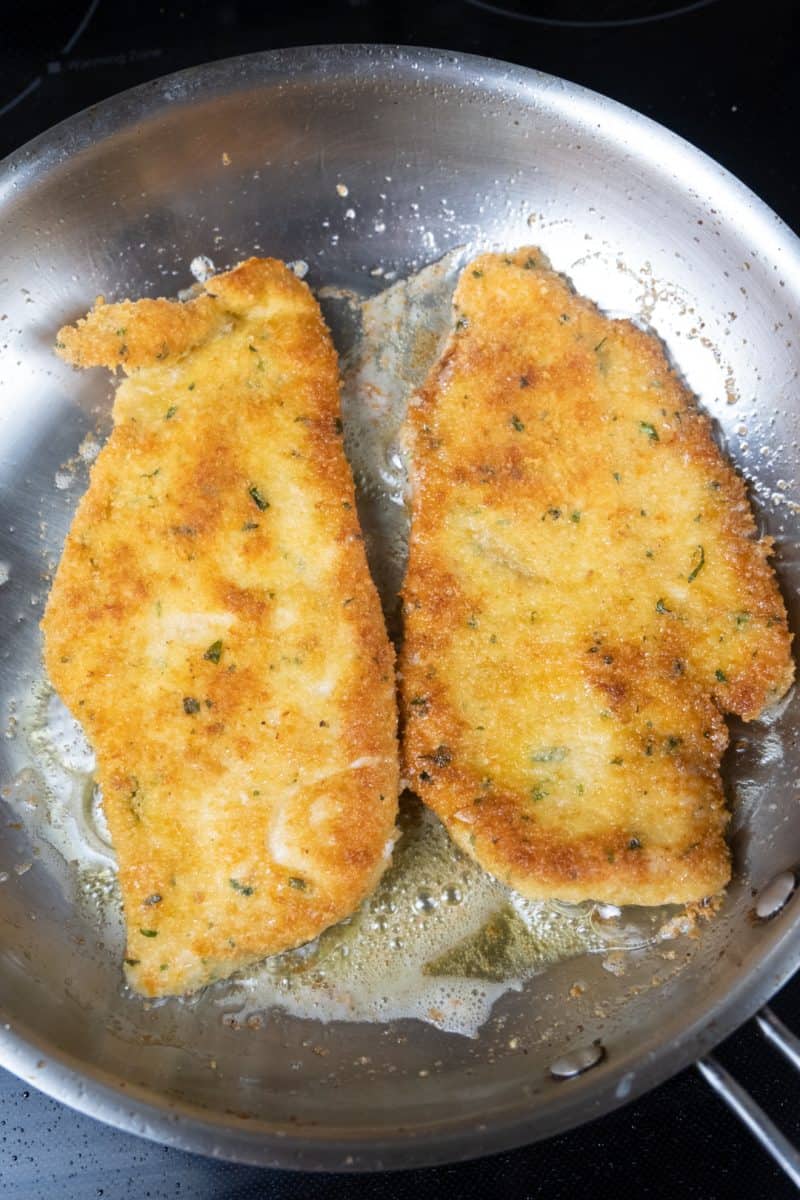As much as Id like to give you a single-word answer here, its impossible. I could only give you my opinion which would be to fry your Italian Chicken Cutlets in a great quality extra virgin olive oil. You shouldn’t fry cutlets in any other oil because there are too many pros and cons of each one to say so. Hopefully, this article helps you figure out what oil to fry chicken cutlets with at YOUR house.
Want to learn more about Chicken Cutlets? Check out our analysis of egg substitutes in our No Egg Chicken Cutlets!.
We experimented with three different oils: Avocado, Canola, and Extra Virgin Olive Oil. These are the three that I hear people discussing the most and I wanted to know what is actually the best. It seems like everyone has an opinion based on what their mothers did for them.
I grew up in a household where my mother baked our chicken cutlets. I know it sounds crazy, but nobody can bake a chicken cutlet like my mom. They were always trying to be health conscious and we rarely fried anything besides eggplant. Ive never been able to replicate what my mom can do with chicken cutlets in the oven. Its actually really annoying. I dont know how they dont get all mushy.
On the other hand, my wifes mother always fried her cutlets in canola oil. So, thats what weve always done for our cutlets. But over the past year and since the creation of Always From Scratch, health has been at the forefront of my mind. How do I live the longest? Ill tell you that it is certainly not by eating canola oil regularly.
Trader Joe’s Avocado Oil, Kirkland Canola Oil, and Partanna Extra Virgin Olive Oil were the brands I used for the test. All of the cutlets were cooked until they reached 165℉. All of the oil was given the same amount of time to heat up and the pan was cleaned in between each oil.
Some interesting facts about canola oil come from BIG CANOLA OIL, which is made up of The Canola Oil Council of Canada and The US Canola Association. So, there is a lot of information out there that definitely has a bias in the sway of canola oil.
Some of the reported benefits in a Meta-Analysis study supported by Big Canola are:
I dont love when anything says “decreases cancer.” I just have a hard time believing that something produced by massive corporations can decrease cancer cell growth. It just doesnt add up for me but thats what the research article states, so take it or leave it.
One quote I try to live by though is “eat food produced by people not corporations.” Its not always possible, but it is important to me that I give my family the best shot. Im not a nutritionist, but I know how to read research. Despite the affordability of bulk oil like canola, the benefits of oils like avocado and olive oil can outweigh the benefits of canola oil.
Be mindful that olive oil can be a bulk oil as well. If youre buying olive oil in a gallon container, make sure to read the label!
Chicken cutlets are a quick and easy dinner staple in many households. Their thin, tender nature makes them perfect for breading and frying up into crispy, golden brown perfection. However, achieving that ideal delicate crunch on the outside while keeping the interior moist and juicy requires care and precision when it comes to oil usage
How much oil should you use to fry chicken cutlets? About 1/4 to 1/2 inch of oil in your pan or skillet is perfect. This depth lets the heat spread out evenly, letting enough hot oil touch the cutlet to make a crispy coating without letting it soak up too much grease.
If you use too little oil, the chicken may not cook evenly, the breading may be too light, and it may stick to the pan. If you use too much oil, the cutlets will become greasy and soggy. It takes some skill to find the right balance, but with a few easy tips, you’ll be making restaurant-quality crispy chicken cutlets in no time.
Step-by-Step Guide to Using the Right Amount of Oil for Chicken Cutlets
1. Select the Appropriate Pan
Choose a heavy skillet or frying pan that will allow you to add enough oil to reach the ideal 1/4 to 1/2 inch depth. The surface of the pan should be large enough to cook multiple cutlets without overcrowding, which can lead to steaming instead of frying. Nonstick pans are ideal as the chicken won’t stick when the oil is at the proper temperature.
2. Preheat Your Oil Properly
Pour your frying oil of choice into your pan – vegetable, canola, peanut, or avocado oils are all good choices due to their high smoke points. Heat the oil over medium-high heat until it shimmers and appears to move freely in the pan.
Use a cooking thermometer to verify it has reached the target hot oil temperature of 350-375°F. The oil must be thoroughly heated before adding the chicken to prevent sticking, ensure proper browning, and seal in juices.
3. Carefully Add Your Chicken Cutlets
Carefully add each breaded cutlet to the hot oil, making sure not to crowd the pan. The cutlets should sizzle vigorously upon contact. If they don’t, wait a minute or two for the oil to warm up and try again.
Fry in batches if needed to avoid crowding. The hot oil should come about halfway up the sides of the chicken. If it doesn’t seem like enough, you can carefully add more heated oil to reach the desired depth.
4. Fry Properly and Remove Carefully
Fry for 3-5 minutes per side, adjusting time based on thickness. The cutlets will turn opaque and the breading will set, transforming into a crispy golden crust. Use tongs to carefully flip the cutlets over to fry both sides evenly.
Once cooked through, remove the cutlets from the oil and allow excess oil to drain off on a wire rack or paper towel-lined plate. Season with salt and pepper to taste.
5. Maintain Proper Oil Temperature
Check that your oil is maintaining the ideal 350-375°F temperature throughout the frying process. The temperature may drop slightly when you add the chicken. Adjust the heat to compensate and recheck the temp periodically. Proper oil heat is crucial for even cooking and optimum crispiness.
Oil Depth Explained
Shallow Frying (1/4 inch oil)
- Best for thin, boneless cutlets
- Allows just enough oil contact to crisp the breading
- Keeps total oil absorption to a minimum
Medium-Depth Frying (1/2 inch oil)
- Provides additional oil to crisp up thicker, bone-in cutlets
- Prevents leaner cuts like chicken breast from drying out
- Requires more oil overall for greater pan coverage
Deep Frying (2+ inches oil)
- Essential for heavily breaded cuts and whole pieces
- Allows chicken to cook evenly when fully submerged
- Can lead to excessive greasiness
- Requires larger pots, more oil, and fryer safety knowledge
No matter what depth you use, always watch carefully to prevent burning or undercooking. The sizzle and bubble activity, golden color, and internal doneness temperature are the best indicators for when your cutlets are perfectly done.
Tips for Achieving the Perfect Crispy Chicken Cutlets
-
Pound chicken breasts thin and even in thickness to promote quick, uniform cooking.
-
Allow breaded cutlets to rest 5-10 minutes before frying so the coating adheres properly.
-
Choose a high smoke point neutral oil like vegetable or canola for maximum crispness.
-
Add spices like paprika, garlic powder, cayenne, or oregano to your breading or flour for extra flavor.
-
Use an instant-read thermometer to check for an internal temperature of 165°F.
-
Instead of paper towels, let fried cutlets drain on a wire rack. This will keep the crispy texture.
-
Work in small batches and don’t overcrowd the pan when frying multiple cutlets.
-
Adjust heat as needed to return oil to the proper temperature after adding chicken.
-
Combine avocado or olive oil with canola or vegetable oil to get the best of both worlds – flavor and frying performance!
With the proper prep, setup, frying technique, and oil quantity, soon you’ll be serving restaurant-caliber crispy chicken cutlets to rave reviews at home. Just be sure to keep an eye on the oil depth, temperature, and browning to nail the texture on your cutlets every time. Now grab your favorite breading and fry up a batch tonight! Crispy crunch awaits.

Smell of each oil
I didn’t plan for this to be a blog category, but the smell of the oil as the pan heated up was the first thing that caught my attention. Im so used to the smell of canola oil that when I started smelling the avocado oil, I was pleasantly surprised.
I did everything here in alphabetical order so that it would be easy to track everything on video. So, I started with avocado oil. I had never fried cutlets in avocado oil. The very first thing I noticed was the smell. The avocado oil smelled sweet and nutty. It was really delightful. It shimmered so perfectly in the pan. You could see it evenly across the pan. As it sat in the pan it slightly yellowed while it was heating up. The fragrance of the avocado oil was definitely my favorite.
It might have been because I had just smelled the avocado oil, but the canola oil just smelled. BAD. The only scent I can relate it to is the smell of a fryer. It was bad in comparison. Obviously, canola oil doesnt smell “bad. ” It didnt have the delightful scent that the avocado oil did. It just smelled like oil. The canola oil smell was my least favorite. Also, when watching the canola oil shimmer, it got slightly cloudy and wasnt shimmering evenly across the pan.
The olive oil was a bit different. It smelled almost a bit fruity or sweet. Maybe even a bit tangy. It definitely had a nice smell to it. You could smell the olives. It was a really refreshing smell, I just preferred the nutty avocado scent.
Texture of each cutlet
One of the most important factors in my mind was texture when deciding what oil to fry chicken cutlets in. Were they fried evenly, how did the chicken cook, etc?.



Avocado oil won this category again! The cutlets were perfectly cooked and completely evenly fried. The inside did not take on that shredded look of overcooked chicken. The avocado oil definitely “cooked” the cutlet the best.
Third place again was the canola oil. The cutlets were unevenly fried. Some of the cutlets had to be slightly overcooked because half the cutlet wasnt cooking at the same rate the other half was. The texture inside some of the canola oil cutlets was just slightly different than the avocado oil. Almost a bit chewier.
The olive oil took second place here. The cutlets werent perfectly even, but they were close enough. The texture of the chicken was close to that of the avocado oil cutlets. They were overall, a great texture, evenly cooked through, just could have been fried slightly darker in certain areas.
How to Make Perfect Crispy Chicken Cutlets | From the Test Kitchen | Bon Appetit
FAQ
How much oil to use when making chicken cutlets?
To make enough cutlets for 4 people you’ll need about 1 cup of oil. If you’re doing them in the oven you’ll need less oil plus an oil spray.
How much oil do you use to cook chicken?
In a skillet 10 inches or bigger, heat 2 tablespoons of canola oil over medium-high heat until it shimmers, about 3 minutes. Carefully add the chicken to the hot pan and cook for 5 to 7 minutes. Swirl the pan just before adding the chicken to evenly distribute the oil.
How much oil does a chicken cutlet absorb?
In terms of the oil absorption of various foods, all fried foods are going to absorb some oil, usually between 8-25% the weight of the food being fried. You’re right in that the temperature of the oil does affect the amount of oil absorbed.
Which oil is best for frying chicken cutlets?
A high smoke point means that oils like vegetable, canola, peanut, and sunflower oil can be used to fry chicken cutlets. Additionally, the oil’s flavor should complement the seasoning of the chicken, enhancing its taste rather than overpowering it.
How long do you deep fry chicken cutlets?
To deep-fry the breaded cutlets, heat a pot of oil to anywhere between 350 and 375 F. (Be sure to choose an oil with a high smoke point, like avocado, vegetable, or peanut oil. ) Cook the chicken for about 10 minutes until the outside is golden brown and crispy and the inside is no longer pink and raw-looking.
How do you cook breaded chicken cutlets?
Place the breaded chicken cutlets on a sheet pan then heat the oil. Heat a cup of oil in a large skillet or pan set over medium-high heat. Once hot, add the chicken cutlets and cook for 2-3 minutes per side until golden brown and crisp. Once cooked through, remove from the oil and allow to drain on kitchen paper.
How do you cook chicken cutlets in a crock pot?
Heat a cup of oil in a large skillet or pan set over medium-high heat. Once hot, add the chicken cutlets and cook for 2-3 minutes per side until golden brown and crisp. Once cooked through, remove from the oil and allow to drain on kitchen paper. Slice and serve with lemon wedges and your preferred side dishes.
Should chicken cutlets be refrigerated?
Freezing is advisable since it’ll prevent the crumb coating from getting soggy. If you’ll be cooking the chicken later in the day, you can refrigerate the breaded raw cutlets, but don’t let them sit for longer than 24 hours.
Can you freeze chicken cutlets?
You can freeze the chicken cutlets in the same way and keep in the freezer for up to 3 months. Leftovers can be kept in an airtight container in the refrigerator for up to 3 days and reheated in the air fryer or a hot oven until crisp. Breaded chicken is great with a variety of side dishes.
